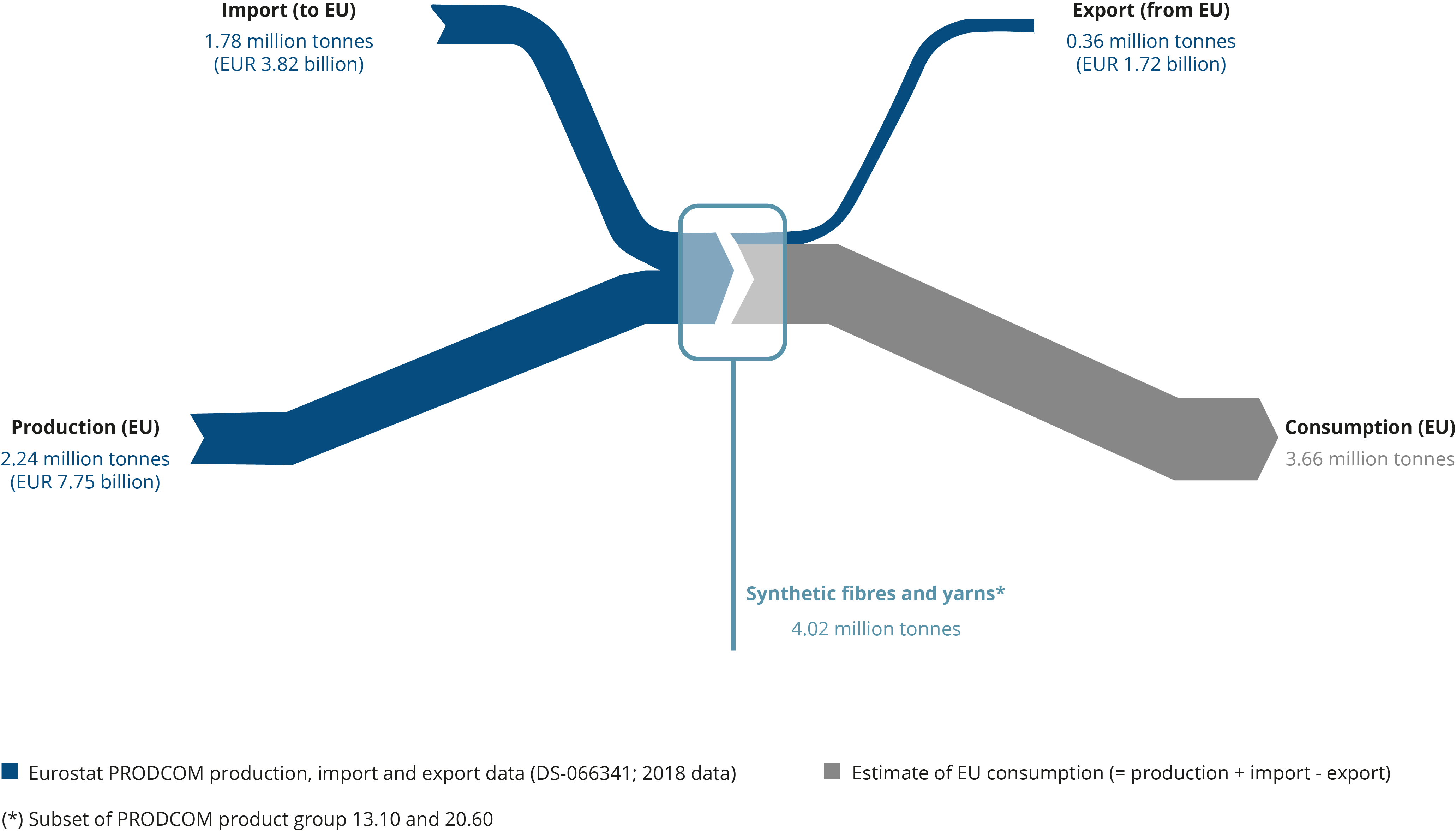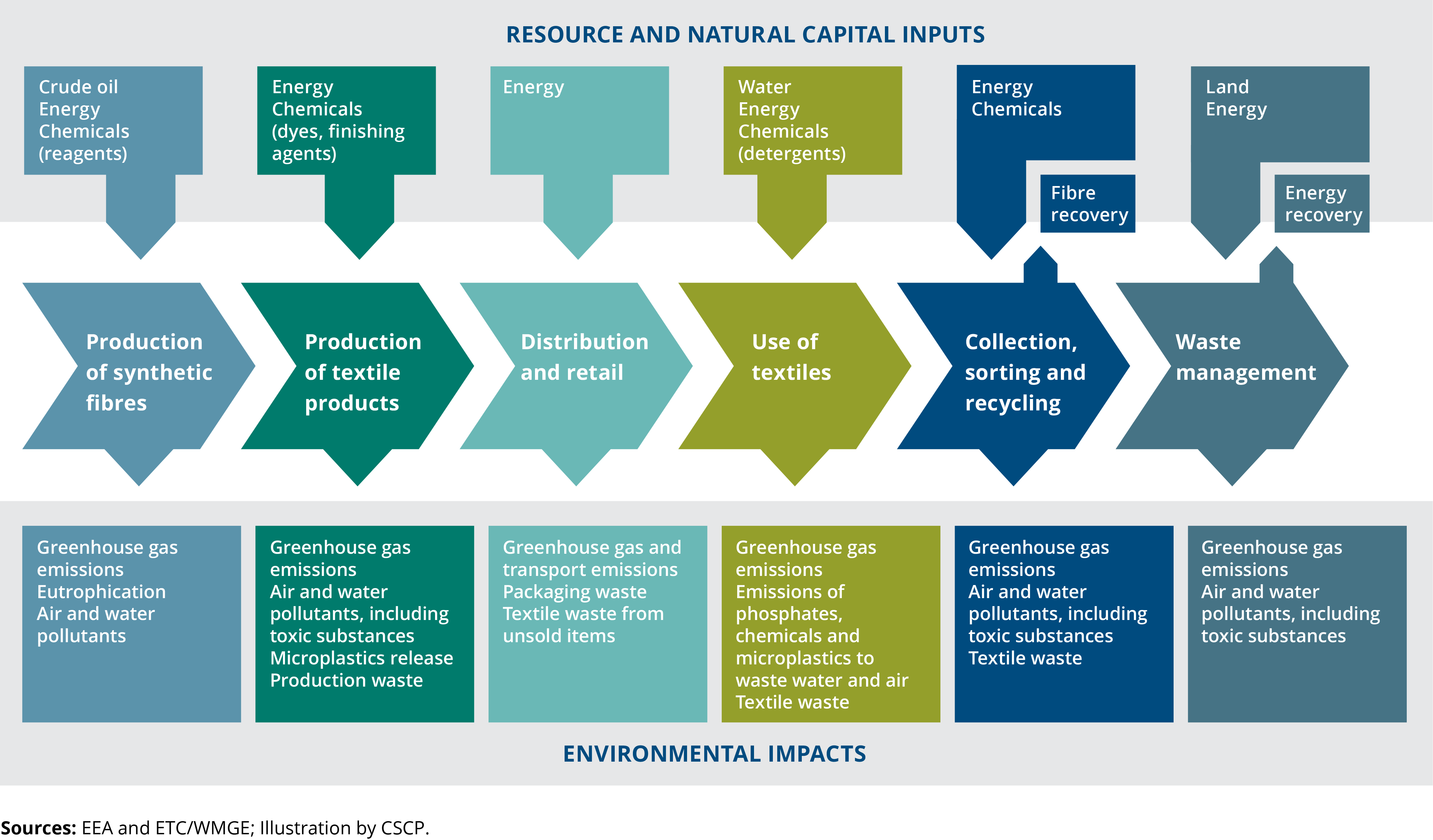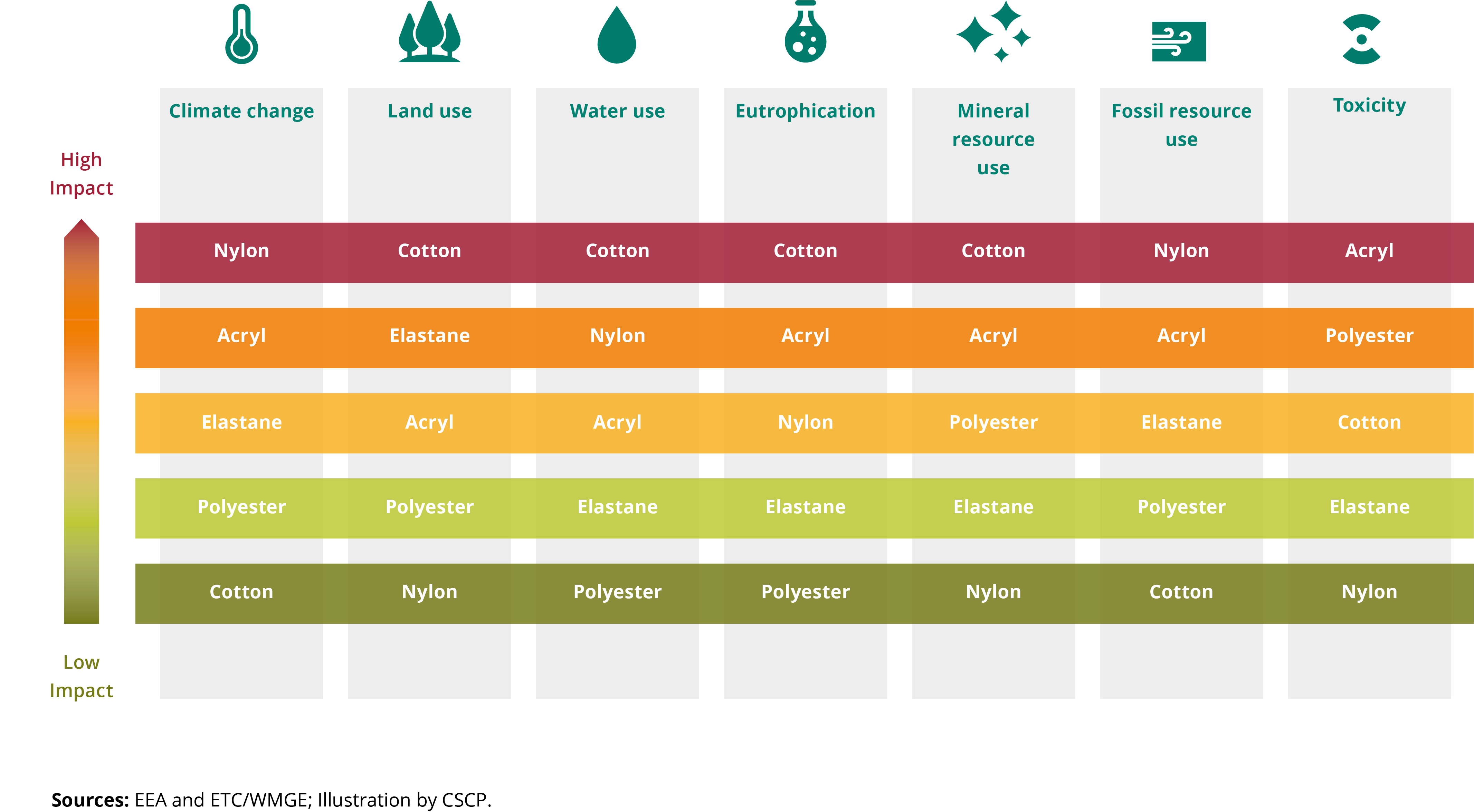Adam, M., 2018, 'The role of human resource management (HRM) for the implementation of sustainable product-service systems (PSS) — an analysis of fashion retailers', Sustainability10(7), pp. 2518.
Beasley, J. and Georgeson, R., 2014, Advancing resource efficiency in Europe. Indicators and waste policy scenarios to deliver a resource efficient and sustainable Europe, European Environmental Bureau, Brussels.
Beton, A., Cordella, M., Dodd, N., Boufateh, I., Wolf, O., Kougoulis, J., Dias, D., Desaxce, M., Perwueltz, A., Farrant, L., Gibon, T., Le Guern, Y. and Institute for Prospective Technological Studies, 2014, Environmental improvement potential of textiles (IMPRO Textiles), Publications Office of the European Union, Luxembourg.
Birkbeck, C. D., 2020, Strengthening international cooperation to tackle plastic pollution: options for the WTO, Global Governance Brief, 1,
EC, 2020a, 'A new Circular Economy Action Plan For a cleaner and more competitive Europe. COM(2020) 98 final', accessed March 26, 2020.
EC, 2020b, Communication from the Commission to the European Parliament, the Council, the Economic and Social Committee and the Committee of the Regions ‘A new circular economy action plan for a cleaner and more competitive Europe’, COM(2020) 98 final of 11 March 2020.
EEA, 2019, Textiles in Europe’s circular economy, EEA Briefing, 10/2019, European Environment Agency.
EIA, 2020, Short-term energy outlook, US Energy Information Administration.
Ellen MacArthur Foundation, 2017,Circular fashion — a new textiles economy: redesigning fashion’s future,
Elsen, M., van Giesen, R., van den Akker, K. and Dunne, A., 2019, Consumer testing of alternatives for communicating the environmental footprint profile of products — final report, Specific contract No 070201/2018/790277/SFRA/ENV.B.1 under Framework contract No CHAFEA/2015/CP/01, prepared by the Ipsos consortium,
ETC/WMGE, Christis, M., Vercalsteren, A., Arnold, M., Nicolau, M., Lafond, E., Mortensen, L. F. and Coscieme, L., 2019, Textiles and the environment in a circular economy, Eionet Report, ETC/WMGE 2019/6, European Topic Centre for Waste and Materials in a Green Economy.
Euratex, 2020,Circular textiles, European Apparel and Textile Confederation.
European Bioplastics, 2020, 'Bioplastics market data', European Bioplastics e.V., accessed May 20, 2020.
Geyer, R., Jambeck, J. R. and Law, K. L., 2017, 'Production, use, and fate of all plastics ever made', Science Advances3(7), pp. e1700782.
Pesnel, S. and Payet, J., 2019, Product Environmental Footprint Category Rules (PEFCR) T-shirts,
Policy Hub and Boston Consulting Group, 2020,Proposal for an EU green recovery plan in the textile, apparel and footwear industry.
Ryberg, M., Laurent, A. and Hausch, M., 2017, Mapping of global plastics value chain and plastics losses to the environment, United Nations Environment Programme.
Šajn, N., 2019,Environmental impact of the textile and clothing industry. What consumers need to know, European Parliamentary Research Service.
Sandin, G., Roos, S. and Johansson, M., 2019, Environmental impact of textile fibers — what we know and what we don’t know. Fiber Bible part 2, Mistra Future Fashion.
Sherrington, C., 2016,Plastics in the marine environment, Eunomia, Bristol, UK.
Stadler, K., Wood, R., Bulavskaya, T., Södersten, C.-J., Simas, M., Schmidt, S., Usubiaga, A., Acosta‐Fernández, J., Kuenen, J., Bruckner, M., Giljum, S., Lutter, S., Merciai, S., Schmidt, J. H., Theurl, M. C., Plutzar, C., Kastner, T., Eisenmenger, N., Erb, K.-H. et al., 2018, 'Exiobase 3: developing a time series of detailed environmentally extended multi-regional input-output tables', Journal of Industrial Ecology22(3), pp. 502–515.
Textile Exchange, 2019,Preferred fiber & materials. Market report 2019,
Textile Exchange, 2020,Material change insights report 2019 — the state of fiber and materials sourcing,
Watson, D., Aare, A. K., Trzepacz, S. and Dahl Petersen, C., 2018,Used textile collection in European cities. Study commissioned by Rijkswaterstaat under the European Clothing Action Plan (ECAP),
Watson, D., Trzepacz, S., Lander Svendsen, N., Wittus Skottfelt, S., Kiørboe, N., Elander, M. and Ljungkvist Nordin, H., 2020, Towards 2025: Separate collection and treatment of textiles in six EU countries, Miljøstyrelsen.



Document Actions
Share with others